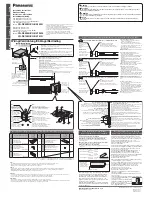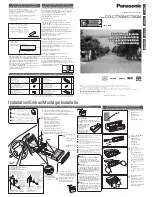
September, 99
TTPM2 Installation and Programming Manual
49
11 INTERFACE
DESCRIPTION
The TTPM2 communicates through an RS232 serial interface.
11.1 DIP
switches
A DIP-switch is accessible through the service opening at the bottom of the TTPM2 en-
closure. The functions of these DIP-switches are (default settings in parenthesis):
Switch
1
ü
ON
ü
OFF
ü
ON
ü
OFF
ü
ý
Bits/s
ý
1200
ý
(9600)
ý
19200
ý
57600
2
þ
OFF
þ
OFF
þ
ON
þ
ON
þ
3 Read-after-write
ON = Disable for ISO magnetic track 1 or 3 data
(OFF)
4 Auto clear
ON = Clear all fixed and variable data during printing
(OFF)
5 Handshaking
ON = XON/XOFF, OFF = RTS/CTS
(OFF)
6 ACK/NAK + error code
ON = enabled, OFF = Silent
(ON)
7
ü
OFF
ü
ON
ü
OFF
ü
ON
ü
ý
Mode
ý
Standard
ý
DCT
ý
CD200
ý
Test
8
þ
OFF
þ
OFF
þ
ON
þ
ON
þ
Standard = Consecutive lower track + single-ticket upper track
DCT =
Dual Consecutive Track (formerly called SGA)
CD200 =
Card dispenser mode
Test =
Swecoin production test setting, not to be used!
IMPORTANT –
DIP switches 7 and 8 are factory set and MUST NOT be changed. The
switch settings must fit the hardware of the different models
Recommendation –
Use RTS/CTS hardware handshake (dip-switch 5 = OFF) when
ACK/NAK + error code is enabled (dip-switch 6 = ON)
11.2 Communications
protocol
The protocol is 8 data bits, 1 stop bit, and no parity. Handshaking is DIP-switch-
selectable, either XON/XOFF or RTS/CTS (DIP-switch 5).
11.3 Communications
port
The following table shows how to connect the TTPM2 to the serial port of a PC compati-
ble computer.
TTPM2
(9 pole D-sub)
PC
(25 pole D-sub)
PC
(9 pole D-sub)
RXD 2
2 TXD
3
TXD 3
3 RXD
2
DTR 4
6 DSR
6
GND 5
7 GND
5
RTS 7
5 CTS
8
















































